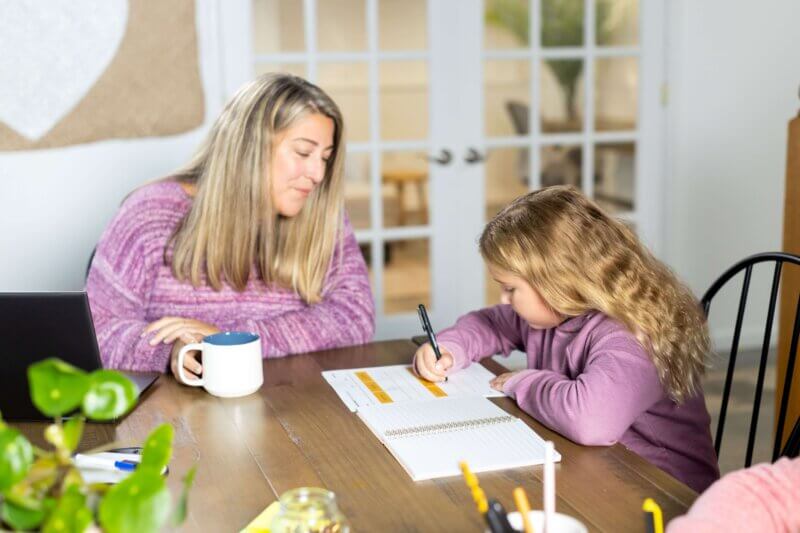Is It Bad Handwriting or Dysgraphia?
Written by Sandie Barrie Blackley, MA/CCC
Published on June 15, 2015
Does your child struggle with handwriting? It could be a sign of a larger issue: dysgraphia. Identifying problems with developmental skills can be tricky. Handwriting, second-nature to adults, is new for children learning it. So, it’s common for them to face some difficulties initially. Studies estimate that 10%-30% of school-aged children have handwriting problems (Karlsdottir & Stefansson, 2002). So, how can parents tell the difference between bad handwriting and a deeper issue like dysgraphia?
Identifying Dysgraphia
Dysgraphia, a specific learning disability, affects 5% to 20% of children. This condition includes difficulties with writing, spelling, and composing text. Often, people overlook dysgraphia or blame it on laziness, lack of motivation, carelessness, or delayed visual and motor processing (Berninger and Wolf, 2009). According to Berninger and Wolf (2009), doctors diagnose dysgraphia when a child shows a cluster of these symptoms, though not necessarily all of them:
- Cramping of fingers and/or pain while writing short entries
- Odd wrist, arm, body, or paper orientations such as bending an arm into an L shape
- Excessive erasures
- Mixed upper-case and lower-case letters
- Inconsistent form and size of letters, or unfinished letters
- Misuse of lines and margins
- Inefficient speed of copying
- Inattentiveness over details when writing
- Frequent need of verbal cues
- Referring heavily on vision to write (e.g., needing to copy rather than formulate)
- Poor legibility
- Handwriting patterns that interfere with spelling and written composition
- Difficulty translating ideas to writing, possibly including difficulty with word-finding
- Inconsistent form and size of letters, or unfinished letters
- Misuse of lines and margins
- Inefficient speed of copying
- Inattentiveness over details when writing
- Frequent need of verbal cues
- Referring heavily on vision to write (e.g., needing to copy rather than formulate)
- Poor legibility
- Handwriting patterns that interfere with spelling and written composition
- Difficulty translating ideas to writing, possibly including difficulty with word-finding

Handwriting is a complex task involving both central (e.g., cognitive, linguistic and psychosocial) and peripheral (e.g., motor and visual) abilities (Purcell, et al., 2011). Individual assessment should begin with a clear description of the individual’s difficulties, with as much descriptive data as possible and using a sample that, as closely as possible, replicates naturalistic (e.g., classroom) demands, such as a written composition task (i.e., a writing sample). The descriptive analysis should include accuracy (letter formation, spelling, word spacing, sentence formulation and punctuation, paragraph formulation, discourse formulation) and writing efficiency (i.e., accuracy plus speed). This type of focused description may lead to additional assessments, including standardized assessments (e.g., of spelling, copying speed, etc.).
While a number of standardized instruments exist (see Rosenblum, Weiss, & Parush, 2003, for a review), each tends to focus on only a single task, usually copying or sentence composition, so they are typically insufficient to capture the demands of naturalistic handwriting performance (Schneck & Amundson, 2010; Feder & Majnemer, 2003). For example, pediatric occupational therapists tend to use standardized tests to evaluate underlying (mostly motor) components of handwriting as opposed to the cognitive and linguistic demands of handwriting such as spelling and sentence formulation (Crowe, 1989; Feder, Majnemer, & Synnes, 2000; Rodger, 1994). The Lexercise Writing Scale is designed to rate diverse aspects of a child’s writing, based on a 15 minute naturalistic writing sample elicited using a picture or situational prompt.
If you have observed your child displaying a cluster of dysgraphia symptoms you may want to seek clinical help and possibly an official diagnosis. Thankfully, structured literacy therapy is typically very successful in addressing dysgraphia symptoms and in improving overall written communication. If you’d like to screen your child for free, you can use our dysgraphia quiz or schedule a free consultation with one of our expert therapists to discuss your concerns.
Improve Your Child’s Reading
Learn more about Lexercise today.
Schedule a FREE
15-minute consultation



Leave a comment